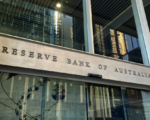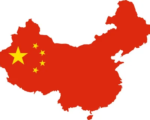Indian Central Bank Likely to Delay Rate Cuts to 2025 Amid Inflation Concerns

The Reserve Bank of India (RBI) is expected to keep its key repo rate at 6.50% during its December 4-6 meeting, according to a Reuters poll conducted from November 18-27. The move comes as surging inflation, fueled by rising food prices, has delayed forecasts for the central bank’s first rate cut in this cycle to February 2025, rather than December 2024 as previously anticipated.
Inflationary Pressures and RBI Stance
Annual retail inflation exceeded the RBI’s 6% tolerance threshold in October, driven by escalating food prices. Despite shifting its monetary policy stance to ‘neutral’ in October, the central bank remains cautious. Governor Shaktikanta Das has emphasized the risks of prematurely lowering rates, signaling a more conservative approach.
Of the 67 economists surveyed, 62 predicted no change in rates in December, while five expected a 25-basis-point (bp) cut. This marks a shift from last month’s poll, where a slight majority anticipated a cut to 6.25%.
“Governor Das has been one of the more hawkish voices on the Monetary Policy Committee. His extension could mean continued caution on rate cuts,” noted Shilan Shah, deputy chief emerging markets economist at Capital Economics.
Easing Cycle Delayed
The survey indicated a growing consensus that the RBI would initiate its easing cycle later, with 21 of 48 economists revising their forecasts from December to February or later. Median projections show the repo rate falling to 6.00% by June 2025, with no further cuts expected until early 2026.
Pranjul Bhandari, HSBC’s chief India economist, remarked, “RBI officials appear less inclined to dismiss spikes in vegetable price inflation and may opt to wait until February or April to ease rates.”
Global and Domestic Economic Impacts
The RBI’s cautious approach contrasts with other major central banks like the U.S. Federal Reserve, which is expected to continue cutting rates in 2025. Factors such as expansionary U.S. fiscal policies and potential tariff increases under President-elect Donald Trump’s administration could influence global monetary trends and limit rate cuts for emerging markets like India.
Domestically, India’s economic growth is projected to slow to 6.8% in the current fiscal year and 6.6% in the next, a decline from over 8% in FY 2023/24. Some economists warn that weaker-than-expected growth could pose downside risks to terminal rate forecasts.
“The interplay between global and domestic conditions will shape the pace and extent of rate cuts in the coming years,” said Gaura Sengupta, chief economist at IDFC Bank.





















